Abstract
Eight hundred and ninety-nine men were studied, aged 16-65 inclusive, who underwent an elective inguinal herniorrhaphy during 1970 and 1971 in eight hospitals in Wessex, and under nine consultant surgeons. There was a significant variation in postoperative inpatient stay and total sickness absence between hospitals and between consultants. The physical activity involved in the patient's occupation, his age at operation, previous sickness absence, bilateral herniorrhaphy, attendance at follow-up outpatients' clinic, type of repair, and the influence exerted by three hospitals and two consultants accounted for only 21% of the variation in total sickness absence. The general practitioners who had referred patients to the hospitals for herniorrhaphy, and the consultant surgeons who carried out the operations, were sent a questionnaire to ascertain their attitudes towards follow-up outpatient appointments and the various factors identified in the first part of the study as significantly influencing total sickness absence. A higher proportion of GPs who felt that an outpatient appointment was necessary before return to work was found in relation to the patients who had the longest mean total sickness absences than among the GPs who looked after the patients with shorter total sickness absences.
Full text
PDF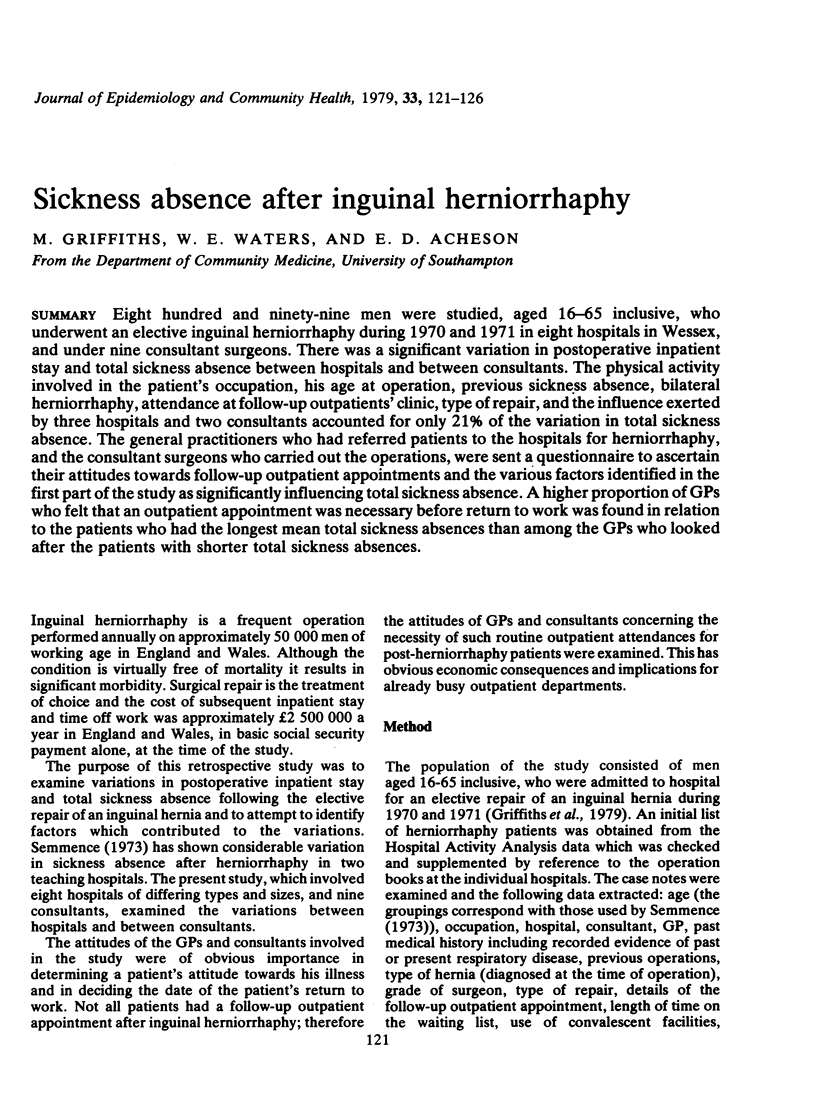
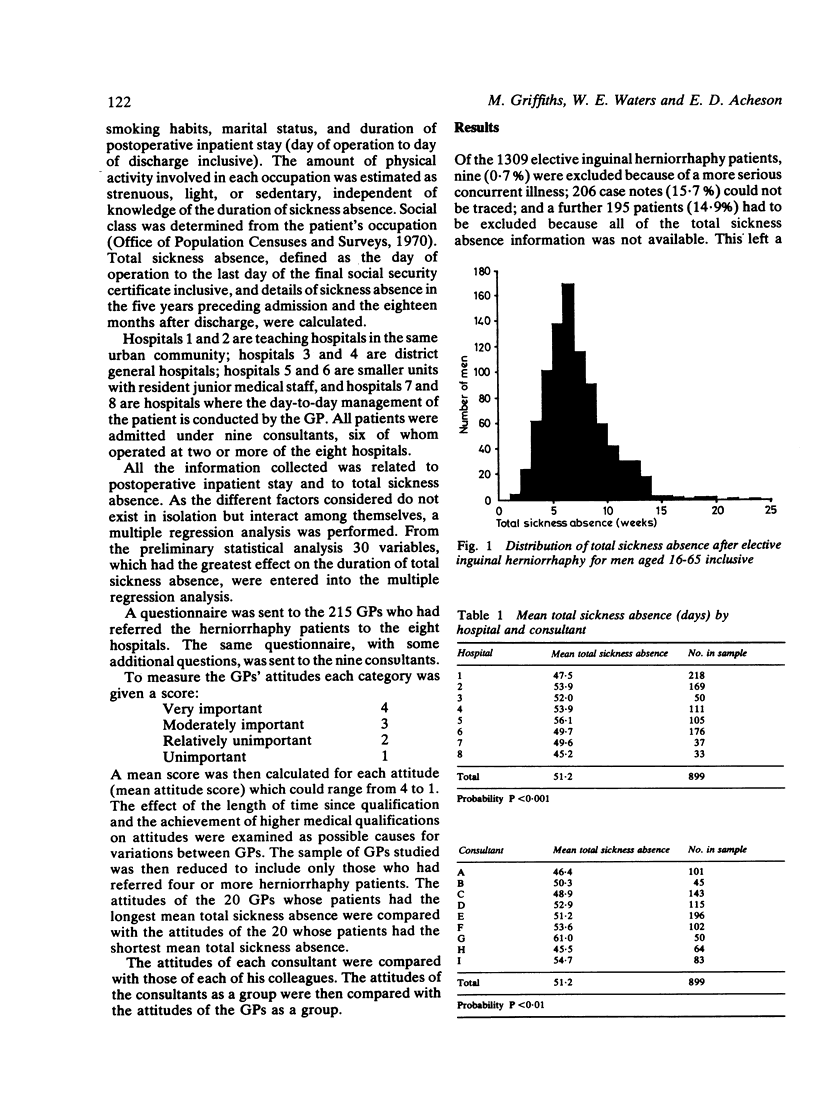
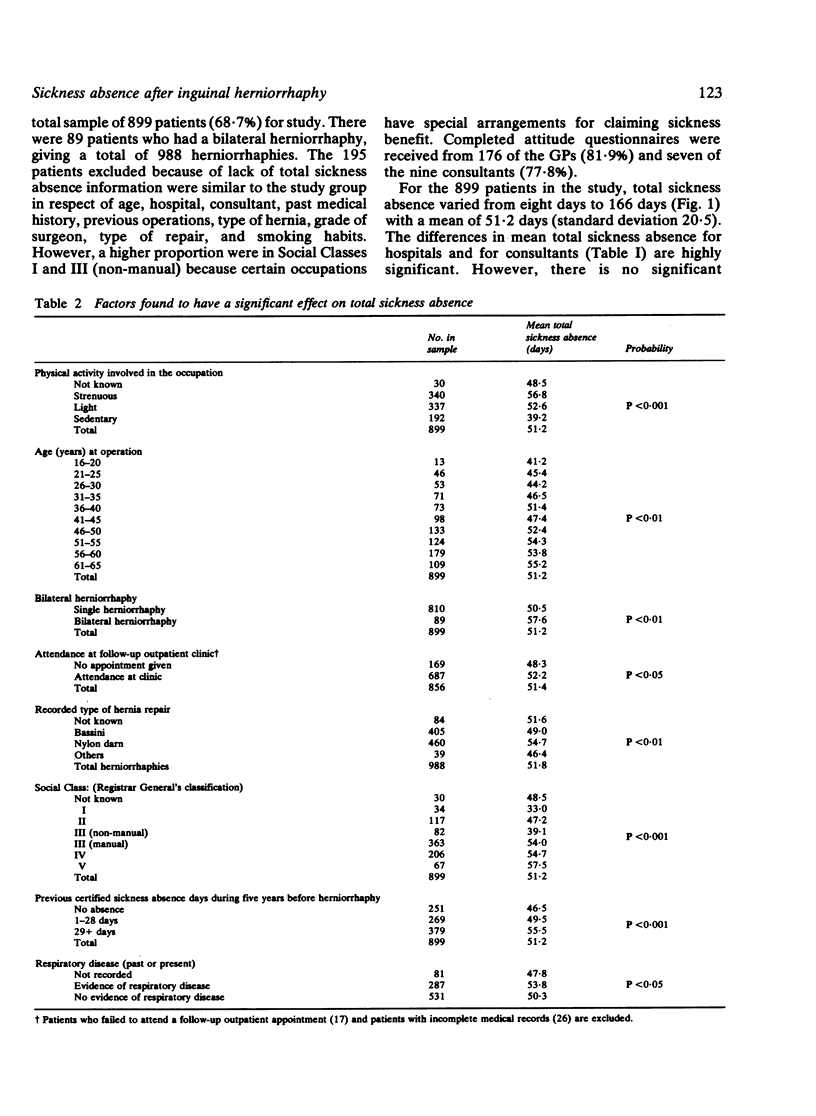
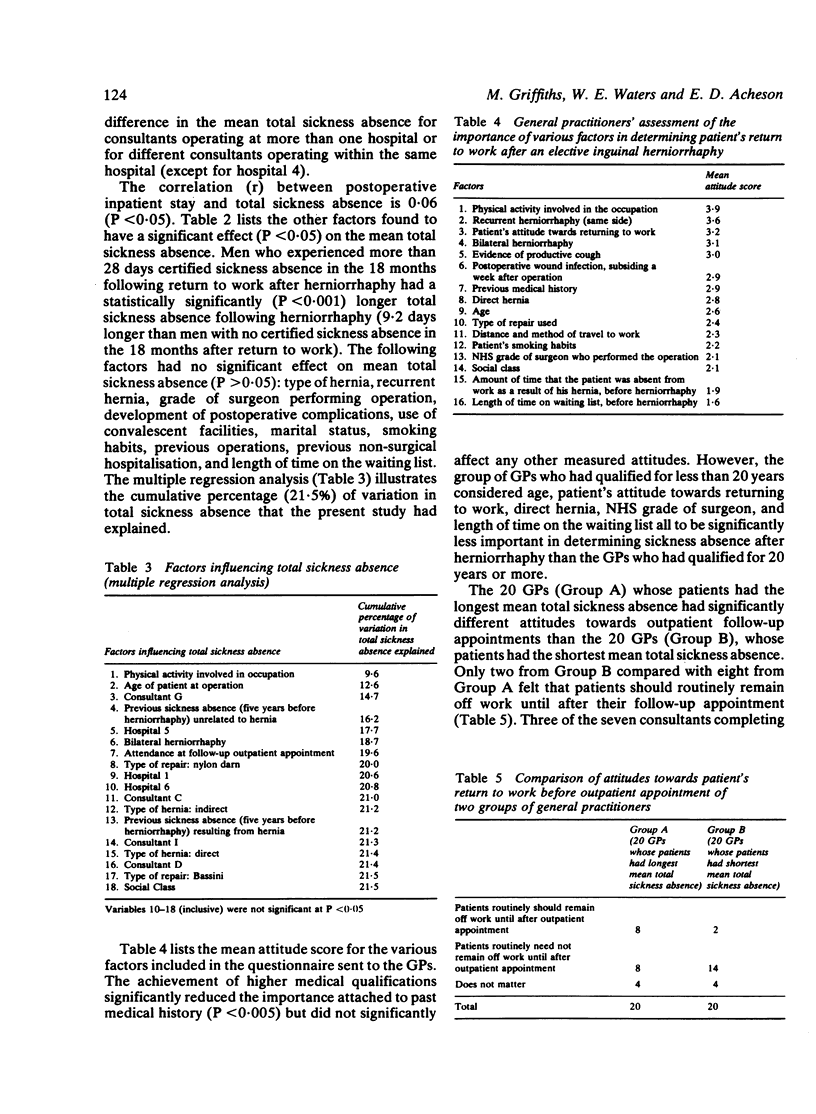
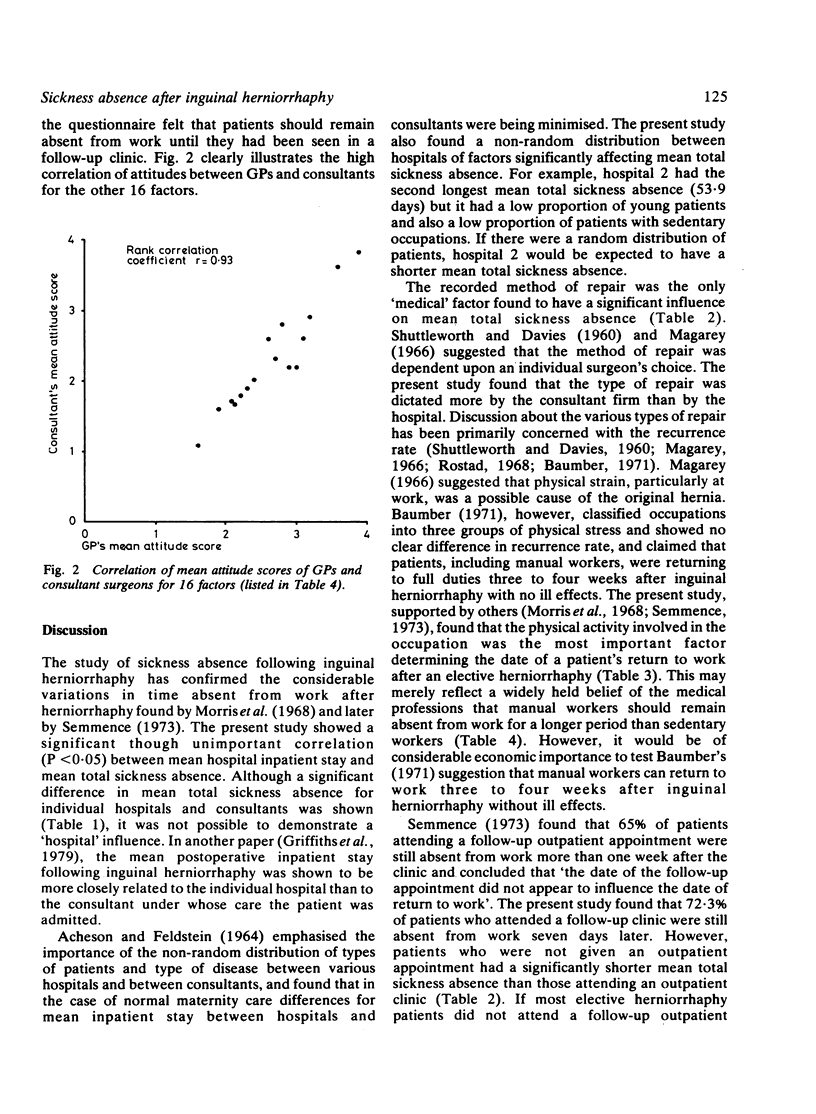
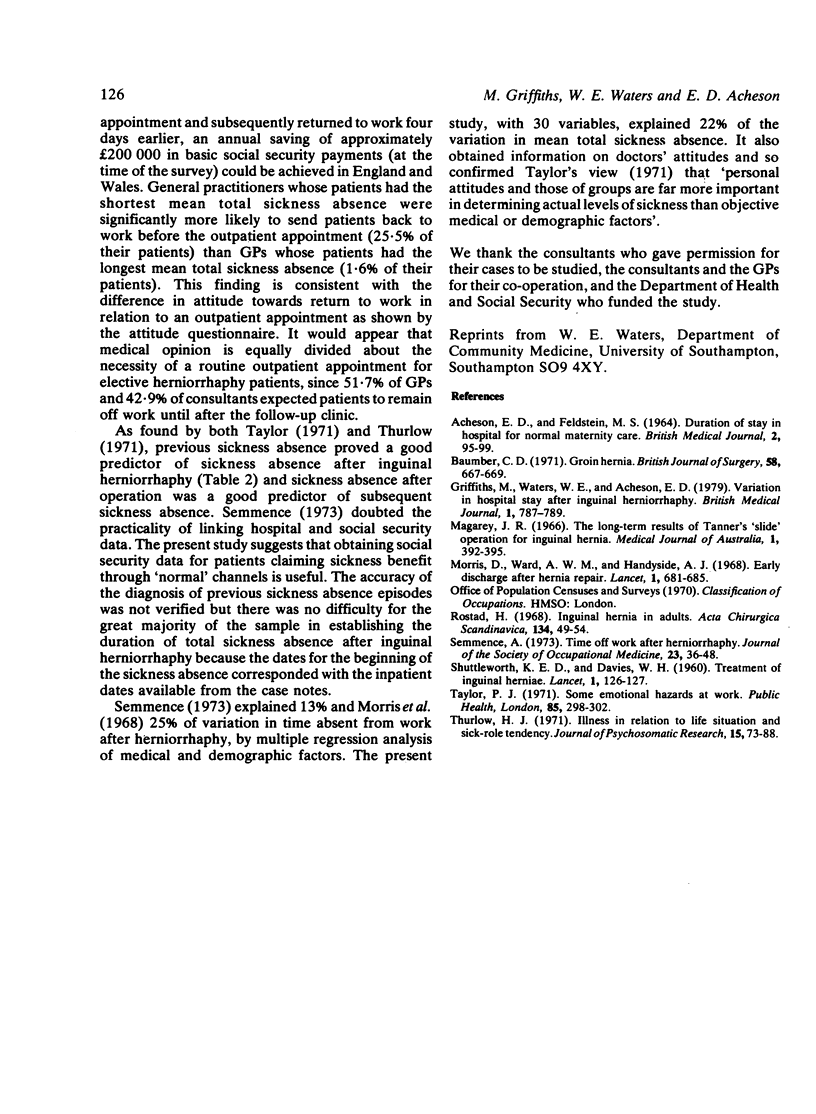
Selected References
These references are in PubMed. This may not be the complete list of references from this article.
- ACHESON E. D., FELDSTEIN M. S. DURATION OF STAY IN HOSPITAL FOR NORMAL MATERNITY CARE. Br Med J. 1964 Jul 11;2(5401):95–99. doi: 10.1136/bmj.2.5401.95. [DOI] [PMC free article] [PubMed] [Google Scholar]
- Baumber C. D. Groin hernia. Br J Surg. 1971 Sep;58(9):667–669. doi: 10.1002/bjs.1800580909. [DOI] [PubMed] [Google Scholar]
- Griffiths M., Waters W. E., Acheson E. D. Variation in hospital stay after inguinal herniorrhaphy. Br Med J. 1979 Mar 24;1(6166):787–789. doi: 10.1136/bmj.1.6166.787. [DOI] [PMC free article] [PubMed] [Google Scholar]
- Magarey J. R. The long-term results of Tanner's "slide" operation for inguinal hernia. Med J Aust. 1966 Mar 5;1(10):392–395. doi: 10.5694/j.1326-5377.1966.tb72402.x. [DOI] [PubMed] [Google Scholar]
- Morris D., Ward A. W., Handyside A. J. Early discharge after hernia repair. Lancet. 1968 Mar 30;1(7544):681–685. doi: 10.1016/s0140-6736(68)92114-4. [DOI] [PubMed] [Google Scholar]
- Rostad H. Inguinal hernia in adults. Recurrence rate related to suture material, recumbency period and anesthesia. Acta Chir Scand. 1968;134(1):49–54. [PubMed] [Google Scholar]
- SHUTTLEWORTH K. E., DAVIES W. H. Treatment of inguinal herniae. Lancet. 1960 Jan 16;1(7116):126–127. doi: 10.1016/s0140-6736(60)90051-9. [DOI] [PubMed] [Google Scholar]
- Semmence A. Time off work after herniorrhaphy. J Soc Occup Med. 1973 Apr;23(2):36–48. doi: 10.1093/occmed/23.2.36. [DOI] [PubMed] [Google Scholar]
- Taylor P. J. Some emotional hazards of work. Public Health. 1971 Sep;85(6):298–302. doi: 10.1016/s0033-3506(71)80118-x. [DOI] [PubMed] [Google Scholar]
- Thurlow H. J. Illness in relation to life situation and sick-role tendency. J Psychosom Res. 1971 Mar;15(1):73–88. doi: 10.1016/0022-3999(71)90076-6. [DOI] [PubMed] [Google Scholar]


